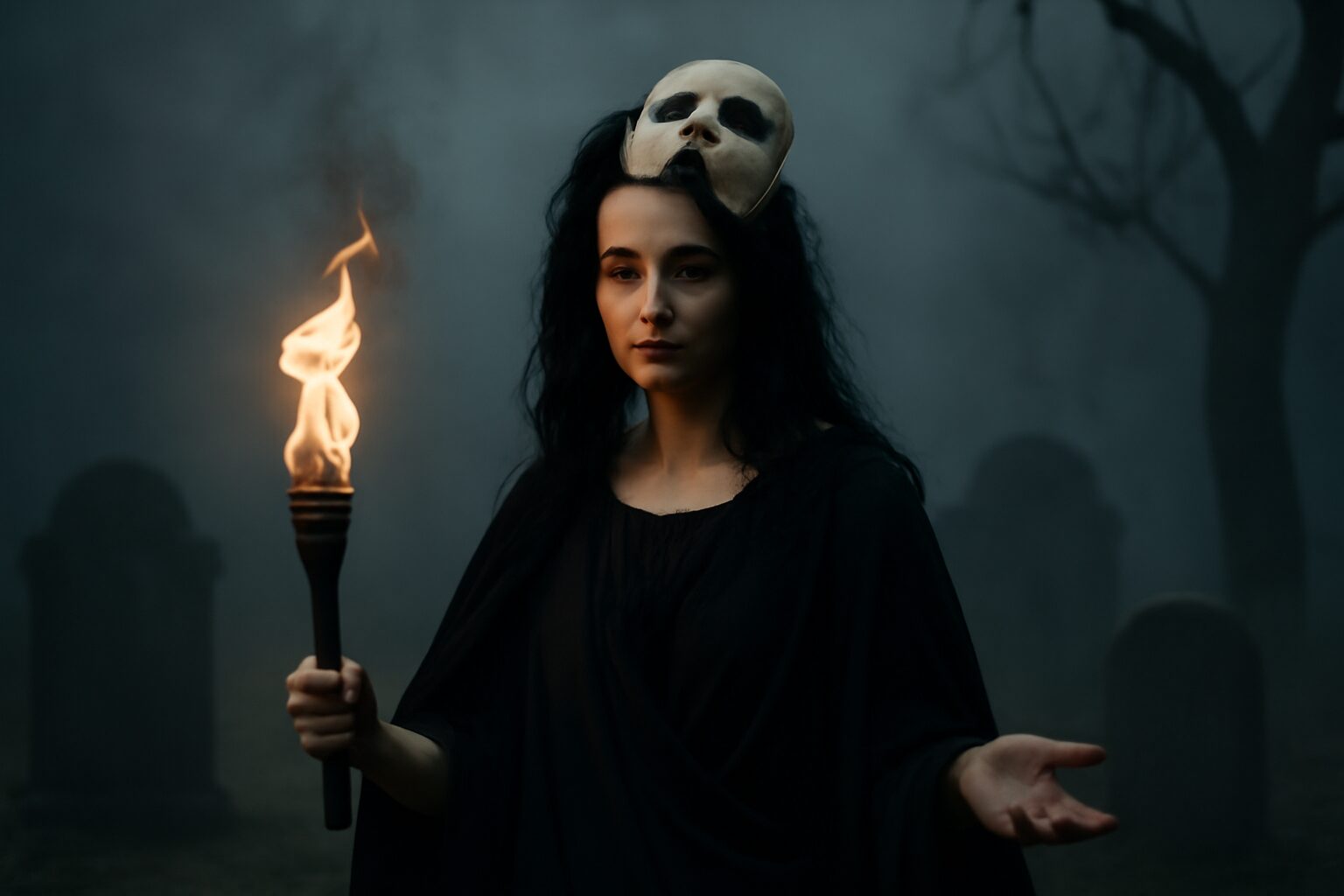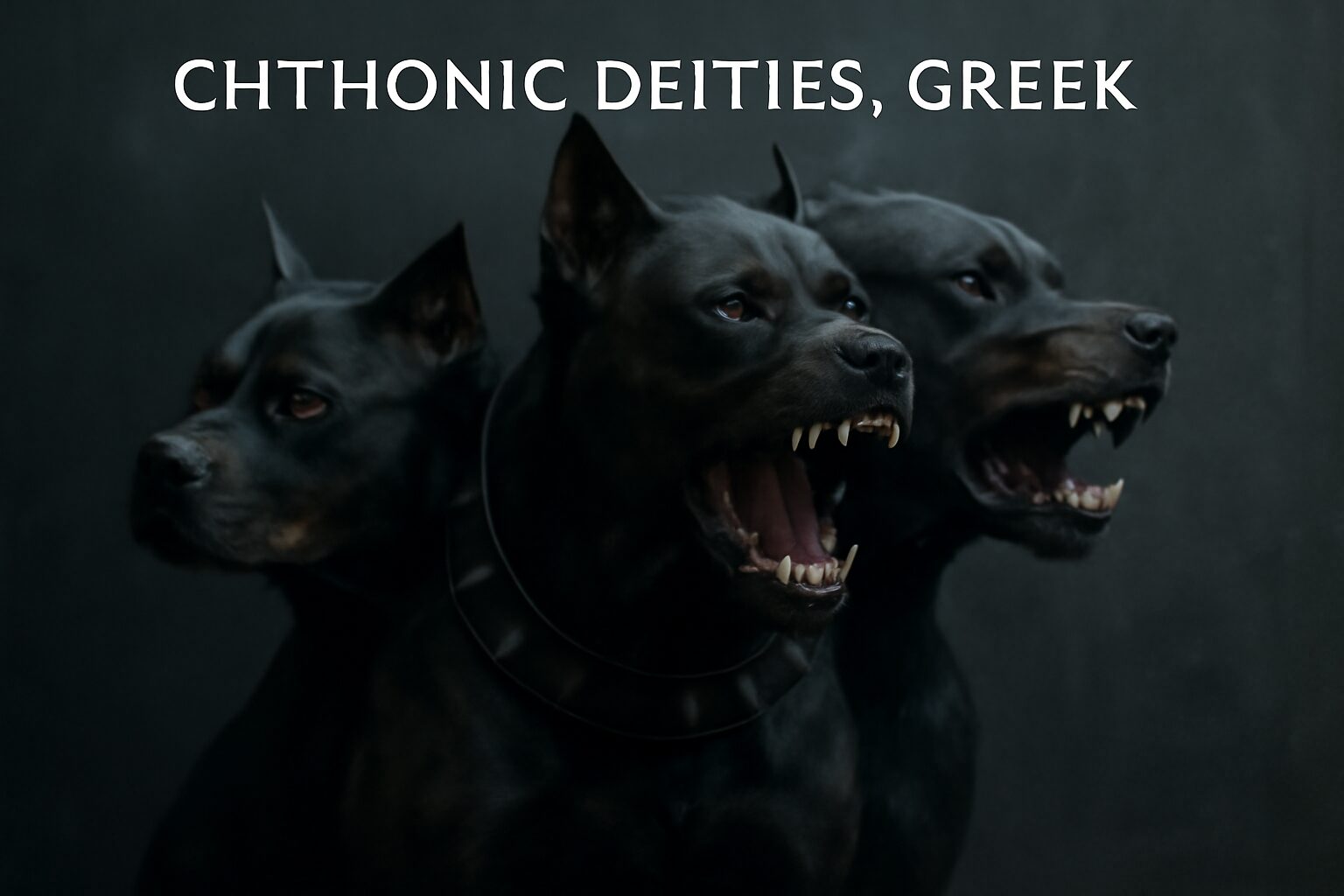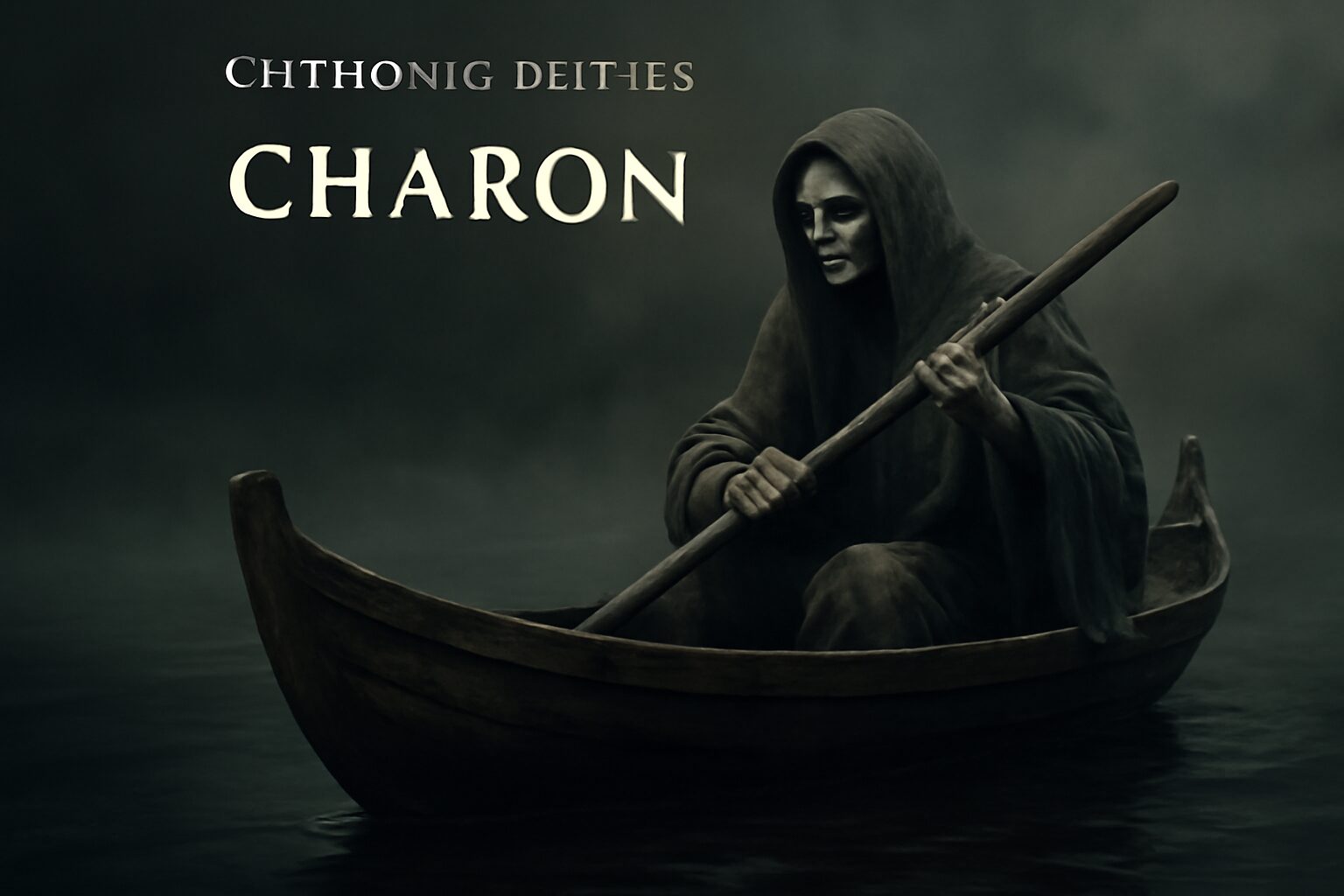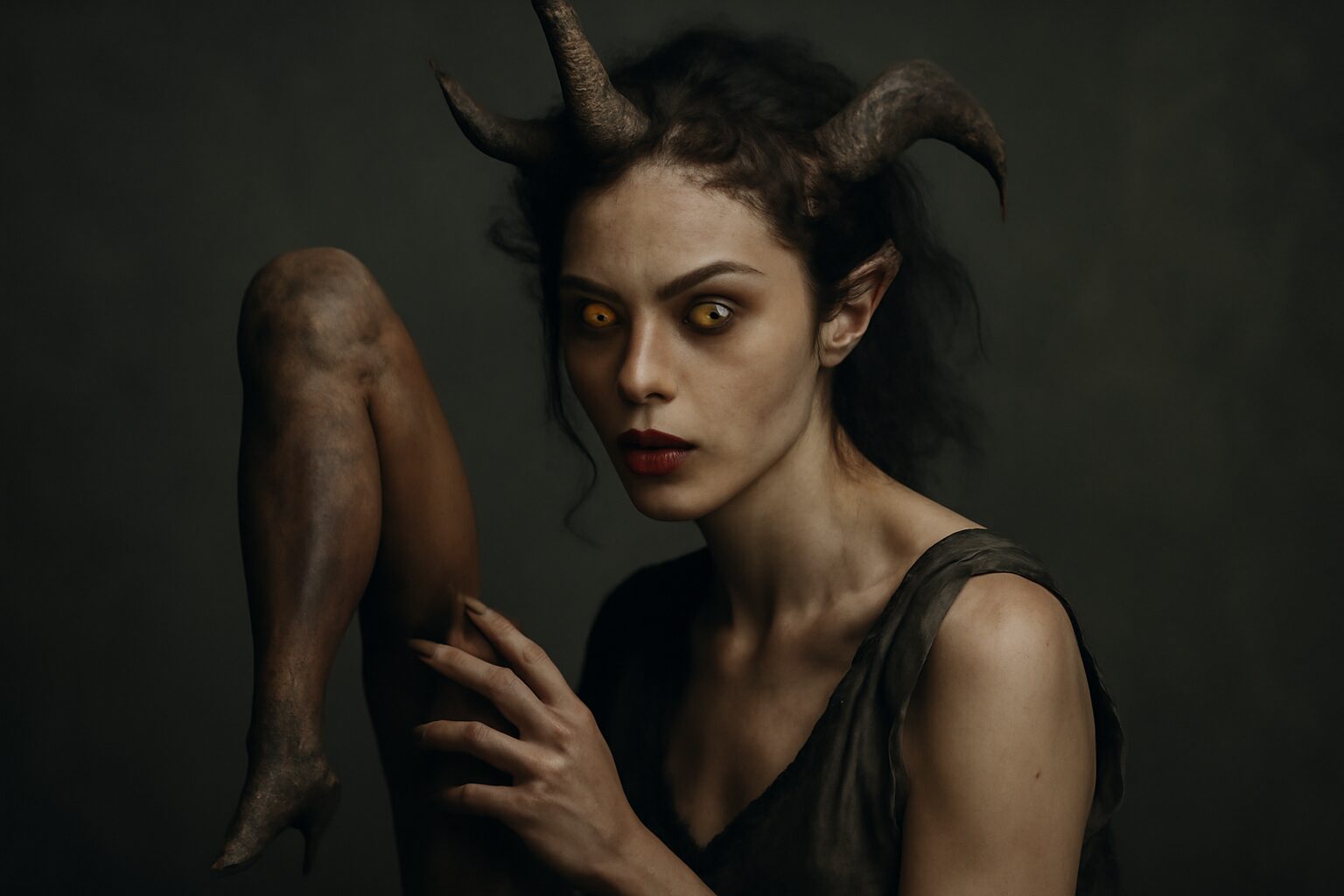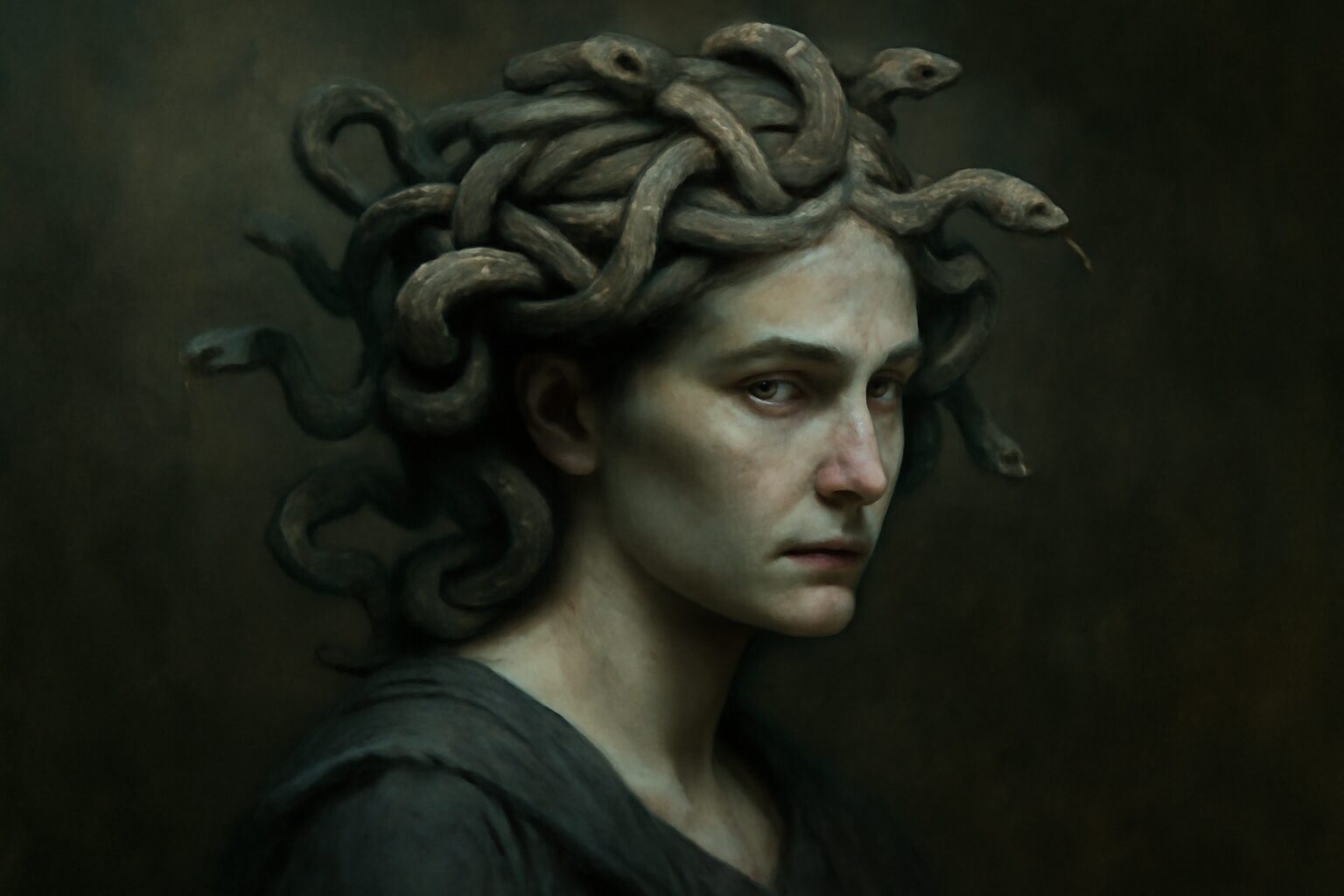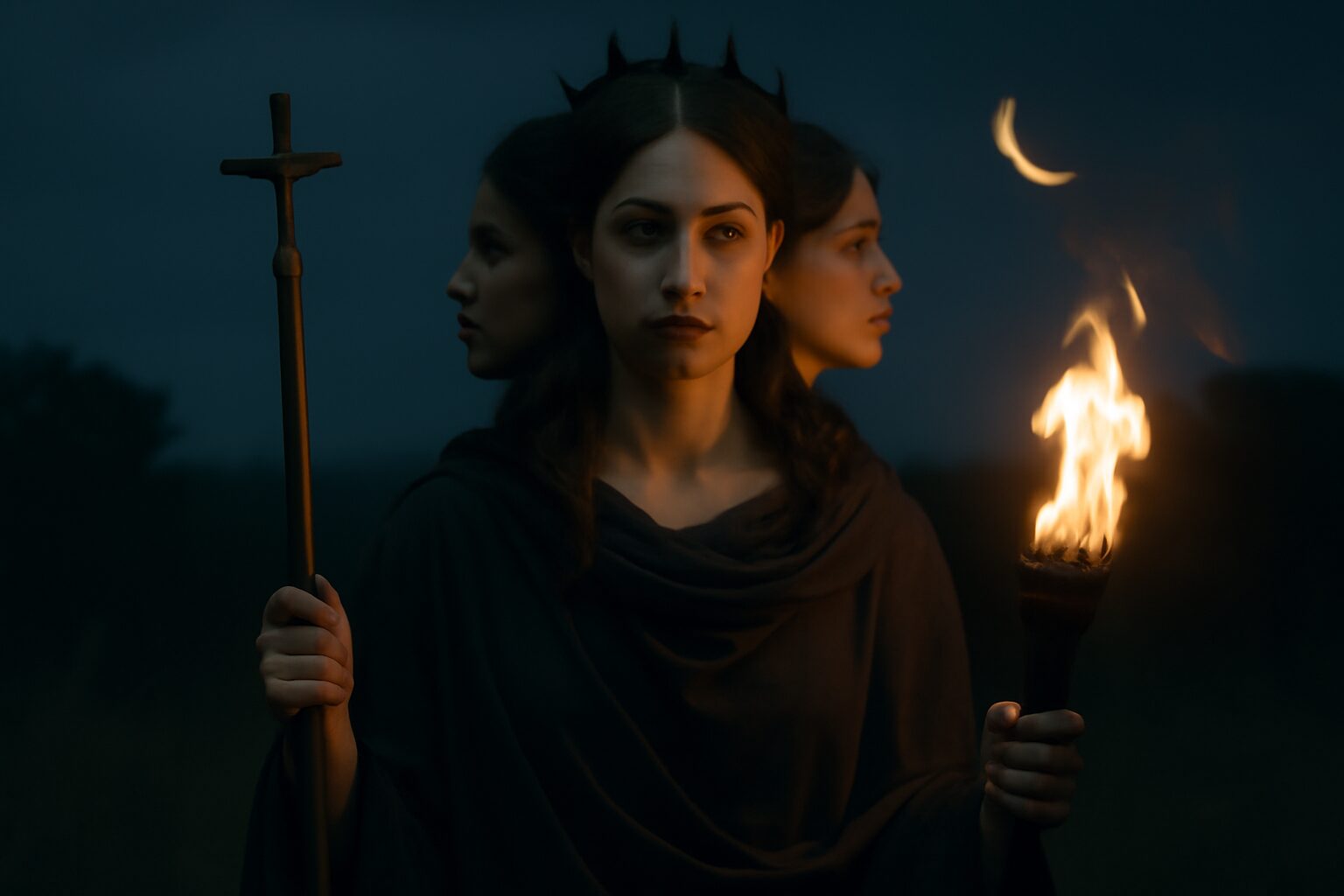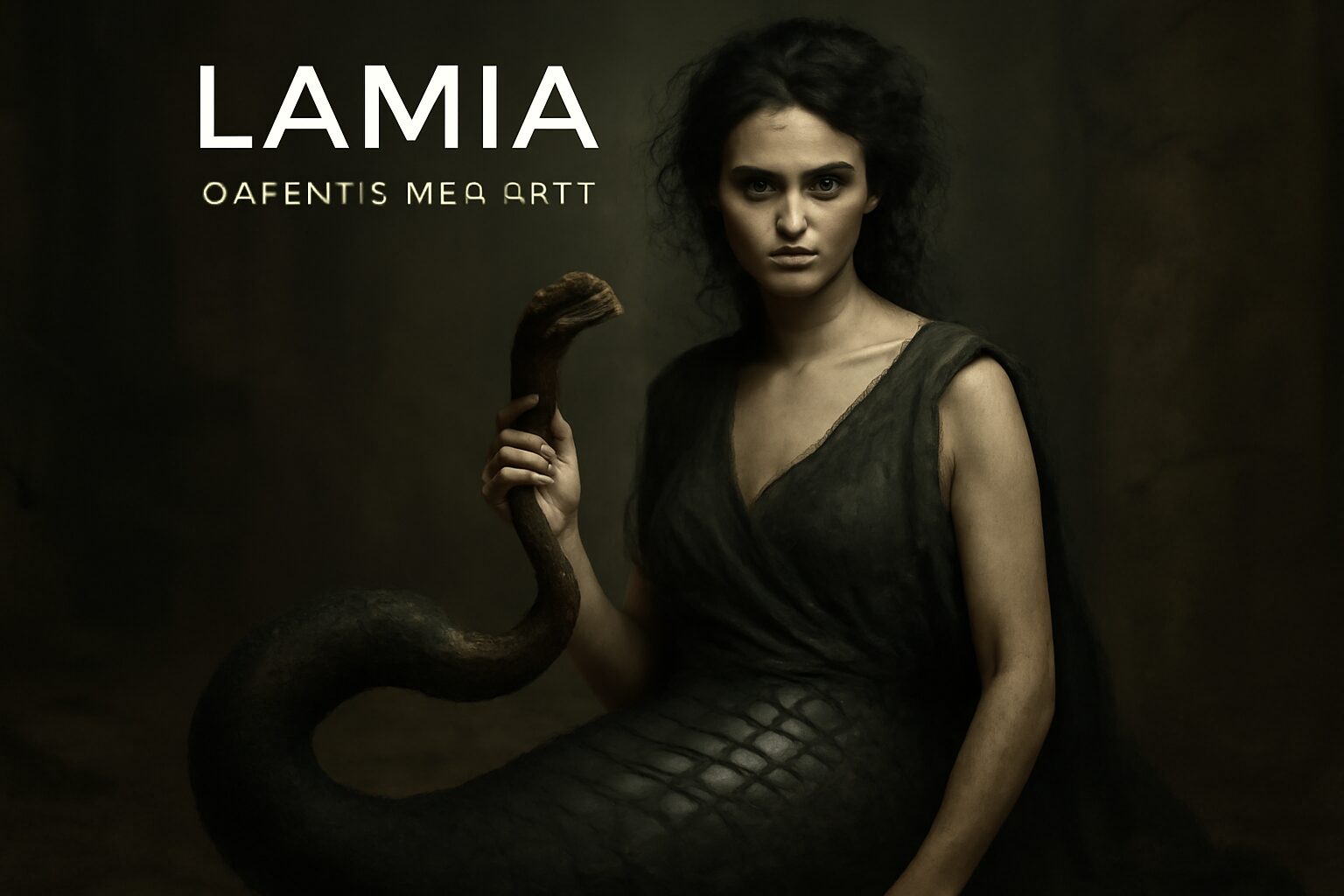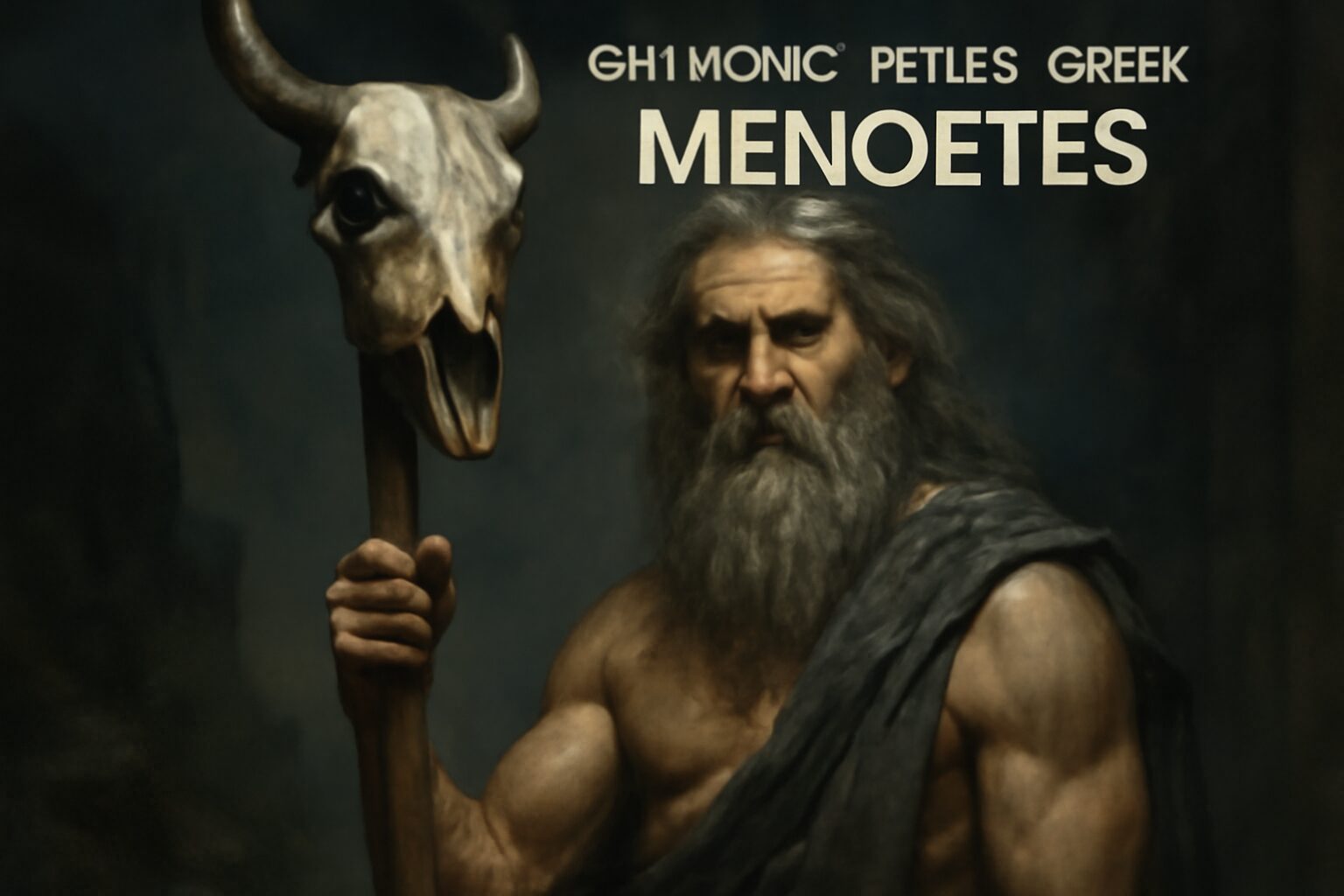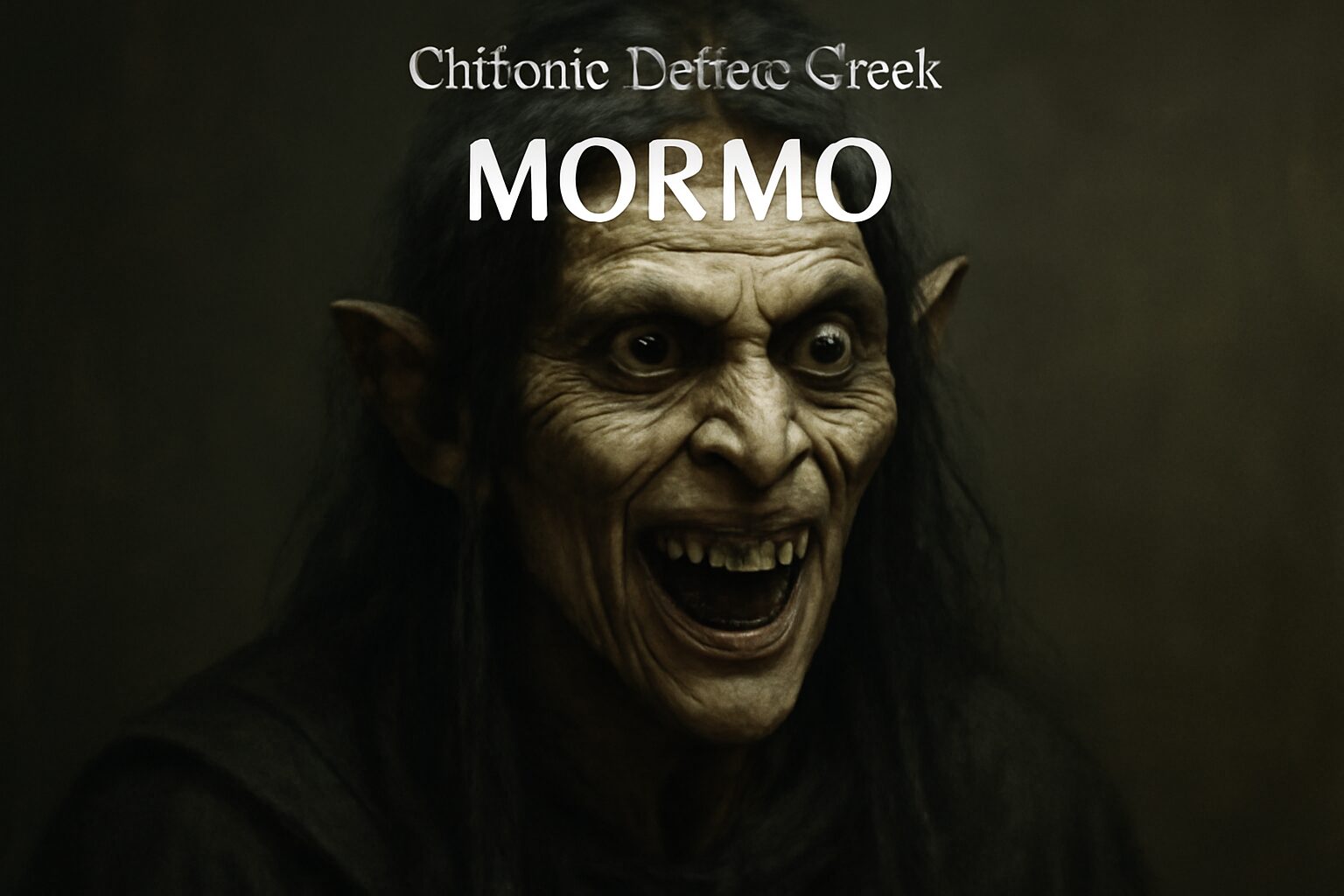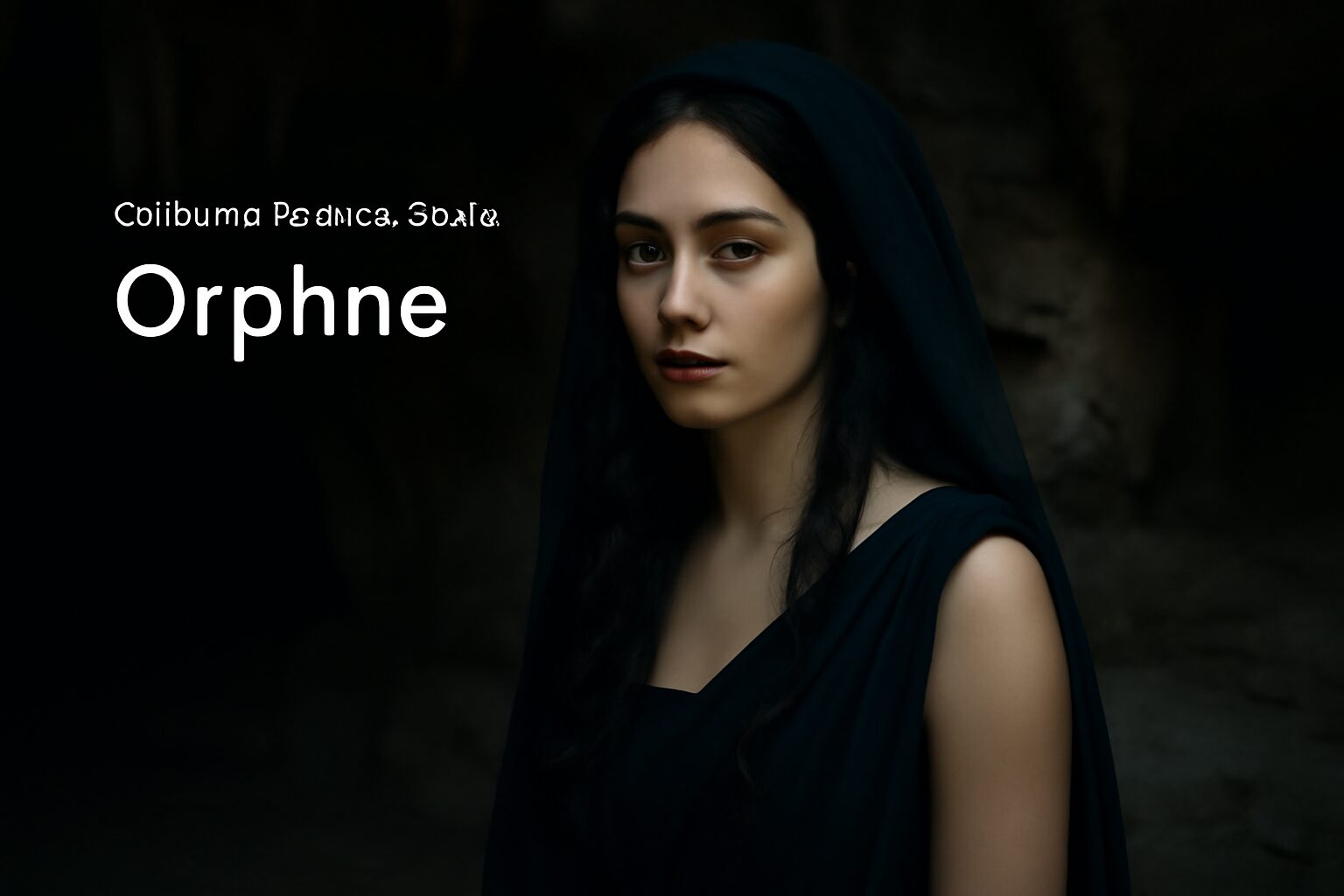Melinoë: The Ghostly Goddess of the Underworld
In Greek mythology, Melinoë is a mysterious and lesser-known chthonic deity associated with ghosts, nightmares, and the restless dead. As a daughter of Persephone and Zeus (who disguised himself as Hades), she embodies the duality of light and darkness, often depicted with a half-black, half-white appearance—symbolizing her connection to both the Olympian and Underworld realms.
Origins and Mythology
Melinoë's birth is shrouded in intrigue. According to the Orphic hymns, Zeus seduced Persephone in the form of her husband, Hades, resulting in Melinoë's conception. This unusual parentage explains her spectral nature and her role as a bridge between the living and the dead. Her name itself may derive from melas (black) and eos (dawn), reflecting her liminal existence.
Unlike other Underworld deities, Melinoë was specifically associated with the manifestation of ghosts. She was believed to wander the earth at night, accompanied by a retinue of restless spirits, bringing nightmares and madness to those who crossed her path. Some myths suggest she served as a psychopomp, guiding souls to the afterlife.
Powers and Symbolism
Melinoë possessed several supernatural abilities:
- Ghostly Manifestation: She could summon and command spirits of the dead
- Nightmare Induction: She had the power to send terrifying visions during sleep
- Shape-shifting: Like many chthonic deities, she could alter her appearance
- Madness: She could inflict mental disturbances on mortals
Her dual-colored appearance made her instantly recognizable in ancient art, with one side of her body black as night and the other white as moonlight. This striking visual representation emphasized her role as a mediator between opposing forces—life and death, waking and dreaming, order and chaos.
Worship and Legacy
While not as widely worshipped as other Greek deities, Melinoë had a cult following, particularly among practitioners of Orphism, a mystical religious movement. The Orphic Hymn to Melinoë provides the most complete surviving account of her nature and attributes. Her worship may have involved nocturnal rituals and offerings to appease restless spirits.
Today, Melinoë's legacy endures as a fascinating example of Greek mythology's complex underworld pantheon. Her unique parentage and ghostly attributes make her stand out among chthonic deities, offering insight into ancient Greek beliefs about death, the afterlife, and the thin veil between worlds.
Alternative Names for Melinoë
God Name: Melinomai (Greek)
An alternative form of Melinou00eb, derived from the Greek verb 'melinomai,' meaning 'to be mad or furious,' reflecting her chthonic and possibly wrathful nature.
God Name: Melanous (Roman)
A rare Romanized variant of Melinou00eb, possibly influenced by Latin words like 'melas' (black) or 'melancholia,' emphasizing her connection to the underworld and spirits.
God Name: Chthonia Melinou00eb (Greek)
An epithet meaning 'of the earth' or 'underworld,' highlighting her role as a chthonic deity associated with ghosts and the afterlife.
Tales about Melinoë
Melinoë and Hecate: The Torchlit Path
In the shadowed groves where the living dare not tread, Melinoë once wandered, her form shifting between light and darkness. She felt a pull toward a crossroads, a place where three paths met under a moonless sky. There stood Hecate, the goddess of magic and crossroads, holding aloft twin torches that cast eerie, dancing shadows.
The Gift of Guidance
Hecate, with eyes that saw past, present, and future, offered Melinoë one of her torches. "Take this," she said, her voice a whisper like rustling leaves. "It will light your way through the deepest fears of mortals and guide lost souls to their rest." With the torch in hand, Melinoë’s presence became a beacon of both terror and solace, her path now illuminated by Hecate’s ancient magic.
Melinoë and Persephone: The Blossom in the Underworld
One day, as Melinoë drifted near the fields of Asphodel, she encountered Persephone, queen of the underworld, who was tending to a rare, luminous flower that bloomed only in the realm of the dead. Its petals shimmered with a soft, ghostly light, and its scent was of memories long forgotten.
A Mother's Comfort
Persephone, knowing Melinoë’s dual nature as a bringer of nightmares and a guide to spirits, plucked the flower and offered it to her. "This blossom holds the balance between life and death," she explained. "Let it remind you that even in darkness, there is beauty and peace." From that day, Melinoë carried the flower’s essence, her haunting presence softened by Persephone’s gift of compassion.
Frequently Asked Questions
Who is Melinou00eb in Greek mythology?
Melinou00eb is a chthonic deity in Greek mythology, often associated with ghosts and nightmares. She is considered the daughter of Persephone and Zeus (or sometimes Hades), and her name means 'dark-minded' or 'propitiation-minded,' reflecting her connection to the underworld.
What are chthonic deities in Greek mythology?
Chthonic deities are gods and spirits associated with the underworld, earth, and the afterlife in Greek mythology. They are often linked to death, fertility, and hidden knowledge, contrasting with the Olympian gods who rule the sky and heavens.
Why is Melinou00eb important in Greek mythology?
Melinou00eb represents the liminal space between life and death, embodying themes of fear, the supernatural, and the unknown. Her role highlights the Greeks' beliefs about the afterlife and the importance of honoring the dead to avoid their wrath.
How does Melinou00eb relate to other underworld gods like Hades?
Melinou00eb is often considered part of Hades' and Persephone's divine family, serving as a bridge between the living and the dead. While Hades rules the underworld, Melinou00eb personifies the eerie and unsettling aspects of death, such as ghosts and nightmares.
What can we learn from Melinou00eb's mythology today?
Melinou00eb's stories remind us of ancient Greek attempts to explain the mysteries of death and the supernatural. Her mythology also reflects cultural attitudes toward fear, the afterlife, and the importance of rituals to appease unseen forcesu2014themes that still resonate in modern storytelling and psychology.

